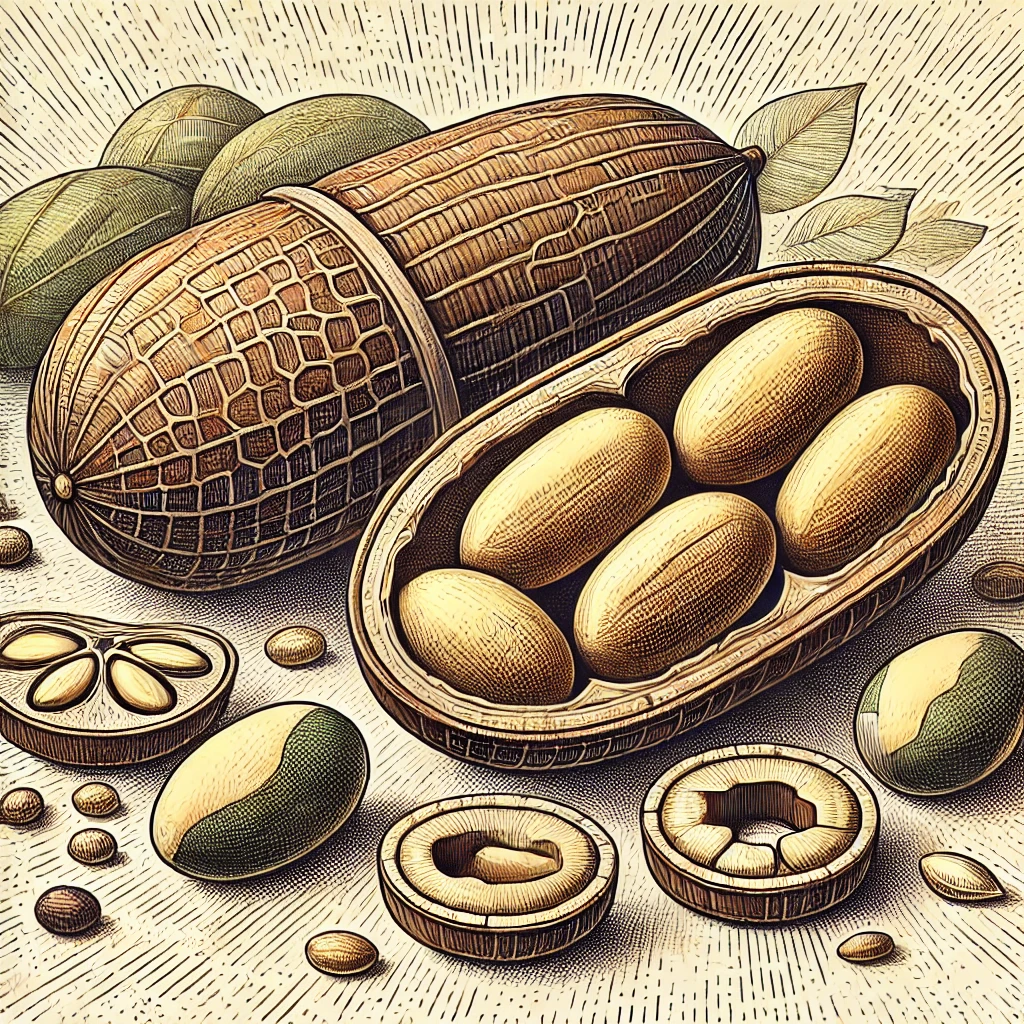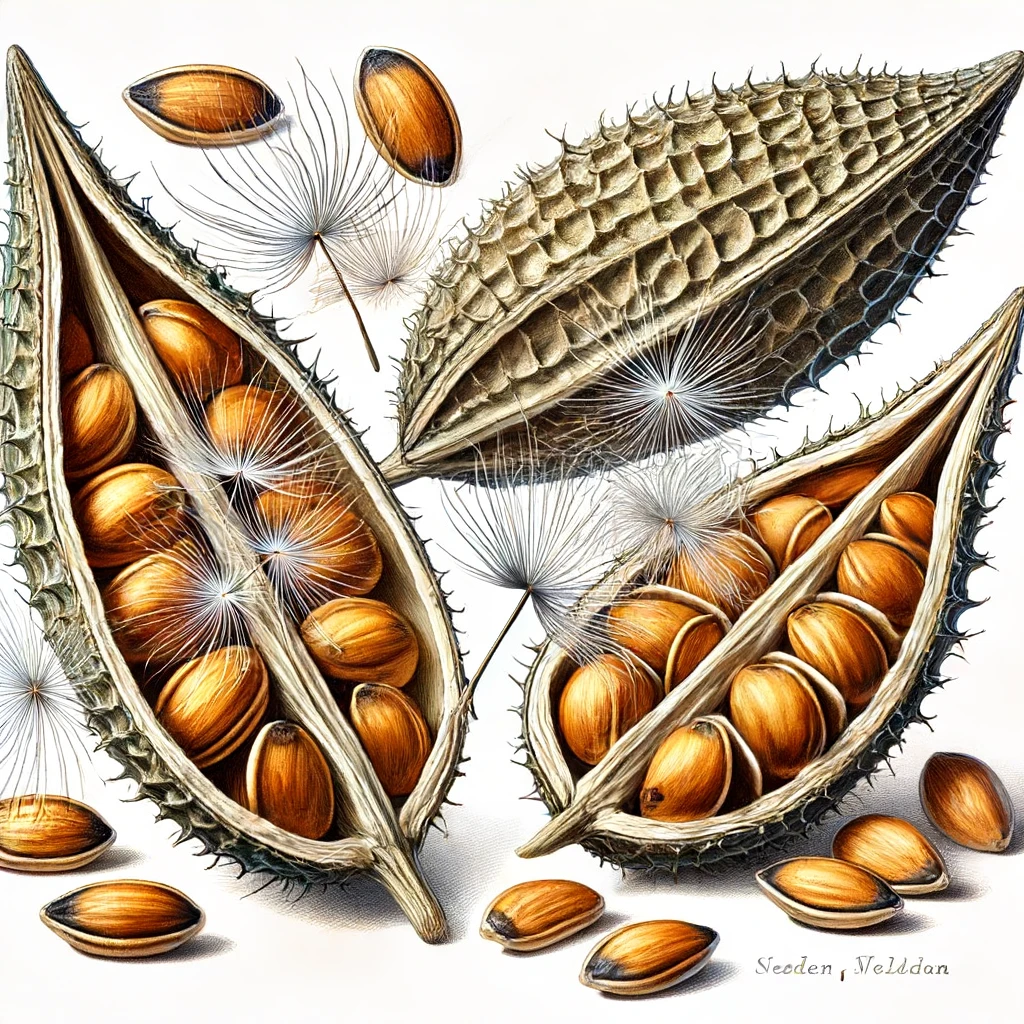Dry Simple Fruits
Introduction to Dry Simple Fruits
 Dry simple fruits are those that do not become fleshy as they mature, maintaining a hard or dry exterior. These fruits can be classified based on their seed dispersal mechanisms into two main types: dehiscent and indehiscent. Dehiscent fruits open naturally to release their seeds, aiding in dispersal, while indehiscent fruits do not open at maturity and rely on other methods for seed dispersal, such as animals or environmental forces. This classification helps in understanding the diverse strategies plants use for reproduction. This section will explore the different types of dry simple fruits and provide examples of each, giving a comprehensive overview of their characteristics and functions.
Dry simple fruits are those that do not become fleshy as they mature, maintaining a hard or dry exterior. These fruits can be classified based on their seed dispersal mechanisms into two main types: dehiscent and indehiscent. Dehiscent fruits open naturally to release their seeds, aiding in dispersal, while indehiscent fruits do not open at maturity and rely on other methods for seed dispersal, such as animals or environmental forces. This classification helps in understanding the diverse strategies plants use for reproduction. This section will explore the different types of dry simple fruits and provide examples of each, giving a comprehensive overview of their characteristics and functions.
Types of Dry Simple Fruits
Dehiscent Dry Fruits
Dehiscent dry fruits have mechanisms that allow them to open and release their seeds. This natural opening ensures the seeds are dispersed away from the parent plant, promoting germination and growth in new locations. Here are some common types of dehiscent dry fruits:
- Legumes (e.g., peas, beans): These fruits split open along two seams to release their seeds. The splitting occurs when the fruit dries, allowing the seeds to scatter.
- Capsules (e.g., Brazil nuts): Capsules are dry fruits that release seeds through openings or pores. The structure of the capsule varies, with some opening along seams and others forming pores.
- Follicles (e.g., milkweed): Follicles split open along one side to release their seeds. These fruits often contain multiple seeds and open when they dry out.
Indehiscent Dry Fruits
Indehiscent dry fruits do not open at maturity to release their seeds; instead, they rely on alternative mechanisms for seed release, such as being dispersed by animals that eat and transport the seeds, or through physical breakage caused by environmental factors like wind or water. Here are some common types of indehiscent dry fruits:
- Achenes (e.g., buttercup): An achene is a small, dry fruit with a single seed that remains attached to the fruit wall. The seed is often dispersed by wind or animals.
- Nuts (e.g., hazelnuts, acorns): Nuts have a hard, protective outer shell that encases a single seed. These fruits rely on animals, like squirrels, to crack open the shell and disperse the seeds.
- Samaras (e.g., elm, maple): Samaras are winged fruits that are carried by the wind. The wing-like structure helps the fruit glide away from the parent tree.
- Schizocarps (e.g., carrot): Schizocarps split into single-seeded parts at maturity. Each part contains a single seed that can grow into a new plant.
- Silicles (e.g., shepherd's purse) and Siliques (e.g., radish): These fruits are elongated and split open to release seeds. Silicles are short and broad, while siliques are long and narrow.
- Utricles (e.g., beet): Utricles have a bladder-like structure that encases the seed. The structure helps in the dispersal of seeds when the fruit matures and dries.
Detailed Examples and Images

Legumes
Legumes are a large family of dry dehiscent fruits that split along two seams. They include familiar garden plants such as peas and beans. Legumes are essential in both agriculture and nutrition due to their high protein content and ability to fix nitrogen in the soil, improving soil fertility for other crops. This family of plants is incredibly diverse, with species adapted to a wide range of climates and conditions.
- Legumes are a vital source of protein in many diets.
- They enrich the soil by fixing nitrogen, which benefits other plants.
- Legumes can be found in a variety of dishes worldwide, from soups to salads.
- Common legumes include lentils, chickpeas, and peanuts.
- They are also used in crop rotation to maintain soil health.

Capsules
Capsules vary greatly in form but are united by their ability to release seeds through openings or pores. Examples include the Brazil nut. The structural diversity of capsules allows them to adapt to various dispersal methods, ensuring that the seeds are spread far and wide. Brazil nuts, for instance, are encased in a tough shell that eventually splits open to release the seeds. These nuts are not only important ecologically but also economically, as they are harvested and sold as a nutritious food source.
- Capsules are found in many plant species, including flowers and trees.
- They can contain multiple seeds, each capable of growing into a new plant.
- The method of seed release can vary widely among different capsule species.
- Capsules play a crucial role in the reproductive cycle of many plants.
- They are often collected for their seeds, which can be used for various purposes.

Follicles
Follicles split open along one side, releasing multiple seeds. An example is the milkweed follicle. Milkweed plants are crucial for the survival of monarch butterflies, as they provide the necessary habitat and food source for the larvae. The seeds of milkweed are attached to silky hairs, which catch the wind and allow the seeds to travel long distances from the parent plant. This adaptation helps milkweed spread across a wide area, ensuring that the species can colonize new habitats effectively.
- Follicles are typically found in a variety of plant species, including shrubs and trees.
- They are important for the dispersal of seeds over large distances.
- The silky hairs attached to the seeds help them float on the wind.
- Follicles often contain multiple seeds, increasing the chances of successful germination.
- These fruits play a key role in the lifecycle of many plant species.
Conclusion
Dry simple fruits exhibit a fascinating array of mechanisms for seed dispersal, ensuring the propagation of the species. Whether dehiscent or indehiscent, these fruits play a crucial role in the lifecycle of many plants.
For more information on other types of fruits, explore the following links:
Additional Resources
To enhance your understanding, we provide a range of articles related to fruit development, uses, nutritional benefits, and cultivation. Explore these topics to become a more knowledgeable gardener and fruit enthusiast.

